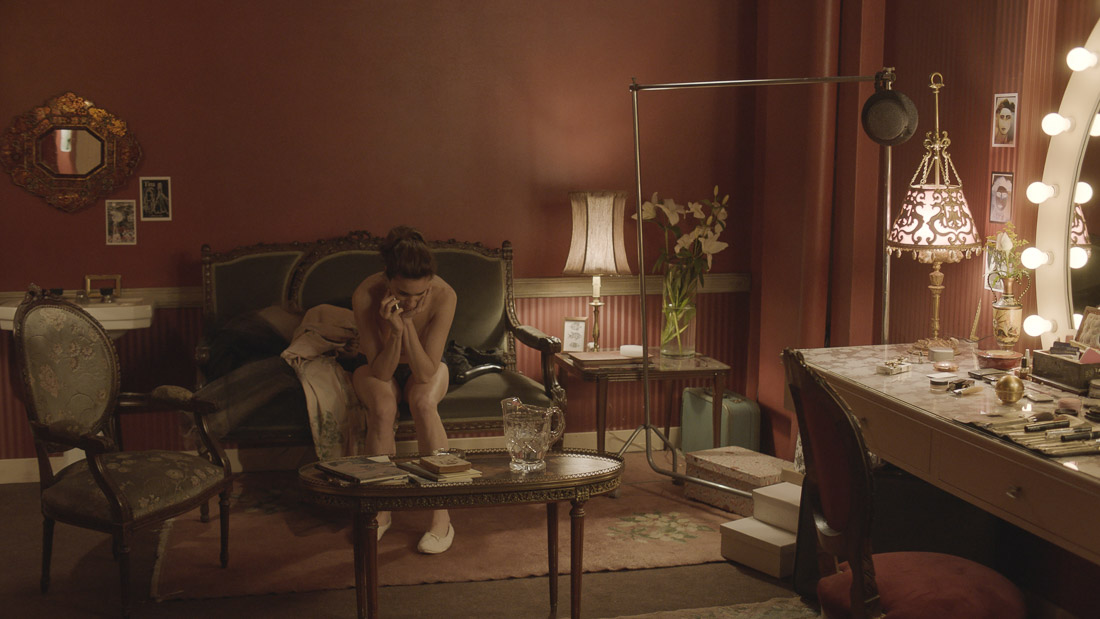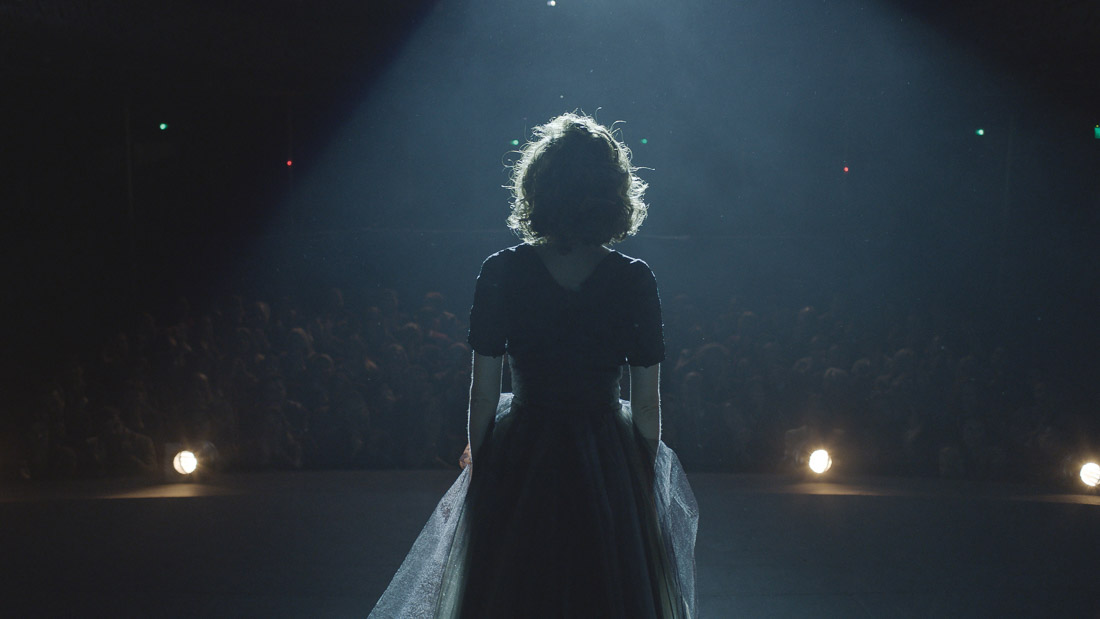Setting the tone with an opening sequence fit for a supernatural thriller, Valeria Bertuccelli’s first directorial venture, La reina del miedo (The Queen of Fear), is a study on the unnamed, sometimes irrational, and mostly intangible things we are afraid of. The Argentine actress, whose most internationally acclaimed part was in Lucia Puenzo’s identity drama XXY, decided to transcend the realm of performance and become the architect of a project through which she could artistically observe the effects that fear of losing control have had on her own journey as a creator. It’s not a self-referential take, but there are plenty of personal parallels.
Caught up in demands that putting up a new stage play involves, Tina (Bertuccelli), a famous actress living in Buenos Aires, is in a constant state of distress for which she can’t verbalize a solid reason. The disturbances to her busy life goes from something as simple as a power outage that puts her on edge to a failing marriage without signs of possible reconciliation, and hardships of balancing her professionals ambitions with what’s emotionally important in her off-stage universe. A sudden discovery about one of her closest friend’s health pushes her to divide her time between Argentina and Denmark. Trapped in this strange limbo that pits her creative commitments against her desire to be there for a loved one, Tina loses grip of everything and flows towards her biggest fear: letting go.
Edited to deliberately avoid dwelling on any moment that resembles stability, the visual language and pacing of the movie give the character a perpetual feeling of ineffectiveness and incompleteness. If a scene is about to become overly emotional a sharp cut drives us in a different direction, and if we are bout to go deep into a particular relationship, the next scene resets the film into the notion of never being firmly grounded on any particular subplot. It’s a clever decision regarding form that emanates from the thread that runs through the entire film, which is Valeria, who wrote, starred, and co-directed it with Fabiana Tiscornia.
Fresh off The Queen of Fear’s Sundance premiere and getting ready for its Argentine theatrical release on March 22, Bertuccelli spoke to Remezcla about becoming a director, her battle with the English language, and why she thinks the animated icon, The Pink Panther, is her character’s inspiration.
On Relating to a Character Whose Driving Force is Fear
Every time I act there is a part of me in the character. You try for the character to resonate with you somehow and you try to understand what’s happening to her. Tina was born from an observation on fear that comes from when I was very young. I’ve been observing fear in me and in others for a long time. There is something about fear that to a certain extent function as a driving force. First you are afraid, and after fear you have to go through something important that transforms it into an energy that, for me, is a kind of driving force. When I was little my father would tell me, “The one who has no fear is not brave, the brave one is that who has fear and overcomes it.” Some of that is in me personally, and it’s also in the character of Tina.
On Being an Actress Playing an Actress
It was complicated to write the screenplay because I would fight a lot with this idea of, “I’m writing about a profession which is my own. How much of this will later be misconstrued as being self-referential?” I was afraid that would happen because I didn’t want it to happen. [Tina] is a very different actress from kind of actress I am. I wouldn’t be capable of doing some of the things she does. However, there was something about that world of acting that I’ve observed very well and that I love to talk about. It seemed to me that the world of acting was a good example for a character like this. I thought about many other professions for the character, and that of an actress, for many reasons, seemed to be the best one. While I was writing it I fought with whether this was a good idea or not, but when it came to playing the character it was much more fun than complicated.
On Deciding to Play the Protagonist in Her Directorial Debut
While I was writing the film, I always thought I wanted to act in it and direct it. I’ve been an actress for a long time. The first big steps I took as an actress when I was starting out were in the theater, specifically in underground theater. I started out writing my own things, acting them out, and directing myself. I had a duo with another girl, which was called Las Hermanas Nervio. We would write and direct ourselves. However, I felt The Queen of Fear was the first time I was going to make something on my own and I was confident about writing it, acting in it, and directing it. I felt brave enough to do that. I thought it would be okay and that that it would be easy. The first producer I took it to was Lita Stantic, who is very well known. She read it and loved the screenplay, but she was very afraid of it. She told me, “Directing your first film and playing a character that’s in it from beginning to end would be very difficult. Someone else has to direct it.” I had to search for another director that wasn’t me. It was a whole thing, and in a way it was a good thing to have someone else do it, and we developed it that way, but then it felt through. 15 days before we started shooting we were still missing money and we couldn’t find it anywhere. The film was at a standstill. I left that production company and found other producers. When I found my new producers, Rei Cine, they told me, “It’s much easier to finance the film if you are the director and we are more excited to see the film if it’s your first film as a director. The idea is to support you, and though we know it’s hard to direct your first film while acting in it from beginning to end, we can think about having a co-director.” That’s how having a co-director came about.

On Finding a Female Co-Director for the Film
First the film was going to be directed by Mar Coll alone, a Catalan director that I admire profoundly. I worked with her in her second movie and we developed this project together for while. We were about to shoot it with her as the director when it felt apart. I always knew it had to be directed by a woman, so when it came to look for a co-director, I believed Fabiana Tiscornia was the perfect person to do it. She had been part of the process when we were going to do it with Mar, but at that point her role was more as a production coordinator. She really knew the project and she had heard me talk about it a lot. I thought it would be nice to have someone like Fabi and for this to be our first film as directors for both of us. She also had a lot of experience as an assistant director. I knew she would be able to help me out a lot on set and that we would be able to work well together because she had heard so much about the movie. She knew what I wanted, what moved me, and what I wanted from the actors. I felt she was the ideal person because she also encouraged me to direct the film.
On What Both Tina and Valeria Are Afraid Of
I think both Tina and I, Valeria, coincide on the fears we have. I’m now much more relaxed about those fears Laughs]. I believe Tina is afraid of letting go, of letting life run its course, of trying not to control anything. She is afraid of letting life happen. She still feels is very important not to be standing in the wrong place. She still feels it is important to decide and control every place one is standing on in life, but she doesn’t know what the consequences are. She still has those vestiges of fear. She is afraid of what saying “No” could bring or what saying “Yes” could do. She is afraid of following her instincts. By the end of the movie what happens to her is that she jumps into letting things happen, whatever that may be. Some time ago, I was in a similar position [Laughs]. Now I feel there is something I’m slowly starting to understand, but at least I’m starting to understand it now.

On Why the Pink Panther Was a Strong Reference for Her Character
The team laughed a lot because when we talked about references for the film in terms of other movies, other actors, and the characters, I would tell them that the reference I had for Tina’s character was the Pink Panther. I think Tina is a lot like the Pink Panther. There is nothing more melancholic but still humorous than the Pink Panther. The Pink Panther lives alone and doesn’t understand the environment that surrounds him. Everything around him is absurd. The Pink Panther is funny; however, he is also sad and melancholic. The Pink Panther was my main reference when I thought about Tina.
On Making a Indie Movies in Argentina
Making films in Argentina is not the easiest thing in the world, especially for films that are in a middle ground. There are large productions that have it easier for being that size, and there are very small movies that because they are so small are easier to make, but then there are others in the middle, which is were The Queen of Fear fits in, that are a bit more difficult to make. At the same time, there is a large group of fierce people willing to work on them. Once I met the folks at Rei, I showed them the project, and a year later we had the finished film. We met in December, we set our shooting days for July, and the following December the film was finished. I believe there are great forces and talents to work on these projects in Argentina. I don’t know where this comes from. Maybe it has to do with the fact that we are so used to living in financial crises [Laughs]. We have a knack for working in these conditions.
This interview was conducted in Spanish and translated to English by the author for Remezcla.







